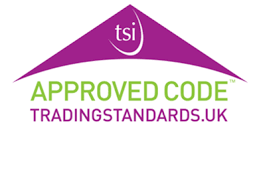St Andrews: 01334 850382
Glenrothes: 01592 654553
Email: info@rbgrant.co.uk
St Andrews: 01334 850382
Glenrothes: 01592 654553
Email: info@rbgrant.co.uk
Design and Installation
RB Grant are approved induction hearing loop installers and testers to the requirements of IEC 60118-4:2014
An induction hearing loop system transmits an audio signal directly to a hearing aid using a magnetic field. This greatly reduces background noise, competing sounds, reverberation and other acoustic distortions that reduce clarity of sound.
People who suffer from hearing loss need more than just higher levels of volume of sound into their ears. People with normal hearing require a signal to noise ratio of 6dB for a reasonable level of intelligibility. This represents quite a noisy background, which might be reverberation, air conditioning, ventilation systems or background noise such as a crowd of people. In most situations it is impractical to issue any form of separate receiver and the use of the individual's hearing aid is a major step to bringing people with hearing loss back into full contact with their environment. Only induction loop systems are capable of doing this.
IEC 60118-4:2014 is applicable to audio-frequency induction-loop systems producing an alternating magnetic field at audio frequencies and intended to provide an input signal for hearing aids operating with an induction pick-up coil (telecoil). Throughout this standard, it is assumed that the hearing aids used with it conform to all relevant parts of IEC 60118. This standard specifies requirements for the field strength in audio-frequency induction loops for hearing aid purposes, which will give adequate signal-to-noise ratio without overloading the hearing aid. The standard also specifies the minimum frequency response requirements for acceptable intelligibility. Methods for measuring the magnetic field strength are specified, and information is given on appropriate measuring equipment (see Annex B), information that should be provided to the operator and users of the system (see Annex C), and other important considerations. This standard does not specify requirements for loop driver amplifiers or associated microphone or audio signal sources, which are dealt with in IEC 62489-1, or for the field strength produced by equipment, such as telephone handsets, within the scope of ITU-T P.370. This third edition cancels and replaces the second edition published in 2006. This edition constitutes a technical revision which includes the following significant technical changes with respect to the previous edition: Addition of Annexes G, H and I where more information is provided about practical considerations and methods of measurement.










